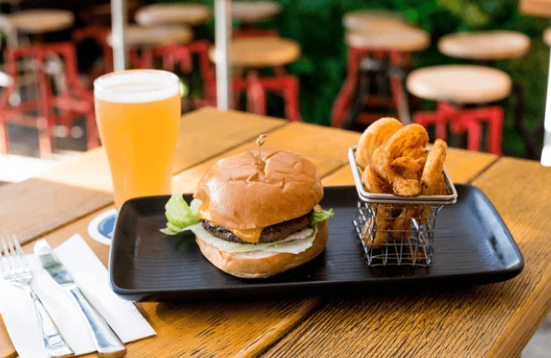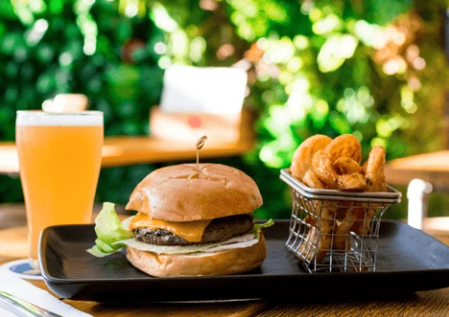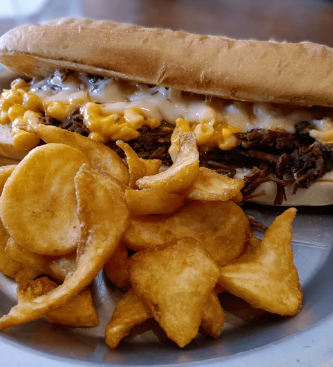Sidewinder fries 🍟 have taken the culinary world by storm, becoming a favorite side dish for people seeking a unique twist on traditional fries 🍟. Their distinctive shape, crispy exterior, and soft, fluffy interior offer a delightful eating experience that pairs well with various dishes. Whether you are a professional chef or a home 🏠 cook 🍽, understanding how to prepare, season, and serve sidewinder fries 🍟 can elevate your meals and impress your guests. This article will guide you through everything you need to know about these delicious fries, from their origin to tips for perfect preparation.
What Are Sidewinder Fries 🍟?
Sidewinder fries🍟 are a modern twist on the classic French fry, known for their distinct spiral shape. Unlike traditional fries 🍟, which are usually thin and straight, sidewinder fries boast a wide, curved design that offers more surface area for a crispy texture. This unique shape helps them stand out on any plate and allows for better seasoning absorption, making each bite flavorful.
The larger surface area also ensures a contrast between the crispy outside and the soft, fluffy inside, providing an ideal combination of textures. This makes sidewinder fries🍟versatile enough to serve with gourmet burgers 🍔, sandwiches 🥪, or even as a standalone snack.
History of Sidewinder Fries 🍟

Though fries 🍟 have been a global favorite for centuries, sidewinder fries are a relatively new culinary innovation. Their origin can be traced back to the early 2000s when restaurants began experimenting with different shapes and textures to offer something beyond the typical French fry. The name “sidewinder” refers to the way the fries curl like a snake, giving them a playful and visually striking appearance.
These fries quickly gained popularity due to their ability to hold up well with various toppings, sauces, and seasonings, making them a versatile option for both casual dining and high-end gastronomy.
How to Prepare Perfect Sidewinder Fries 🍟
1. Selecting the Right Potatoes
For the best sidewinder fries, the type of potato you use is crucial. Russet potatoes 🥔 are ideal due to their high starch content and low moisture. This allows for a crispy outer layer while maintaining a fluffy interior. Yukon Gold potatoes 🥔 can also be used for a creamier texture but may not achieve the same level of crispiness.
When selecting your potatoes, choose medium to large ones with firm, unblemished skin.
2. Cutting Sidewinder Fries🍟
Achieving the signature spiral shape of sidewinder fries requires a bit more effort than regular fries. You’ll need a spiralizer or a specialized fry cutter designed for curly fries. Begin by washing the potatoes thoroughly, leaving the skin on for added texture. Then, place the potato in the spiralizer and cut it into wide, spiral-shaped pieces. The thickness of the fries can vary, but ½ inch to ¾ inch is ideal for achieving the perfect balance of crispiness and fluffiness.
3. Prepping the Fries 🍟for Cooking
Once your fries are cut, it’s essential to remove excess starch to ensure they fry evenly and become crispy. Let the fries sit in chilled water for a minimum of 30 minutes. This step not only removes the starch but also helps the fries stay crispy for longer after cooking.
After soaking, drain the fries and pat them dry with paper towels. Ensuring the fries are completely dry before frying is crucial to avoid excess oil absorption.
4. Frying vs. Baking Sidewinder Fries🍟
There are two popular methods for cooking sidewinder fries: frying and baking. Both have their advantages, depending on the texture and health preferences you’re aiming for.
Frying
For the crispiest sidewinder fries, frying is the preferred method. Heat your oil (preferably canola or peanut oil) to 350°F (175°C). Fry the sidewinder fries in small batches for 4-6 minutes until they are golden brown and crispy on the outside. Be sure not to overcrowd the fryer, as this will lower the oil temperature and result in soggy fries.
Once fried, place the fries on a wire rack or a plate lined with paper towels to drain any excess oil.
Baking
For a healthier alternative, you can bake sidewinder fries. Preheat your oven to 425°F (220°C) and toss the fries in a light coating of vegetable or olive oil. Spread them out on a baking sheet in a single layer and bake for 20-25 minutes, flipping halfway through to ensure even cooking. Baked sidewinder fries will have a slightly softer texture but can still achieve a satisfying crispness.
Seasoning Your Sidewinder Fries🍟

One of the best things about sidewinder fries is their ability to hold a wide variety of seasonings. Here are some popular seasoning options:
- Classic Salt and Pepper: Simple yet effective, this allows the potato’s natural flavor to shine through.
- Garlic Parmesan: Toss the fries in minced garlic, grated Parmesan cheese, and a sprinkle of parsley for a rich, savory taste.
- Spicy Cajun: Add a kick to your fries with a blend of paprika, cayenne pepper, garlic powder, and onion powder.
- Truffle Oil: For a gourmet twist, drizzle the fries with truffle oil and finish with a sprinkle of sea salt and Parmesan.
Whatever seasoning you choose, make sure to season the fries immediately after frying or baking, while they’re still hot, to ensure the flavors adhere properly. there is a similar recipe here : qoqyrecipes.com
Serving Ideas for Sidewinder Fries 🍟
Sidewinder fries are incredibly versatile and can be served in a variety of ways:
- Loaded Fries: Top your sidewinder fries with melted cheese 🧀, bacon 🥓, green onions, and sour cream for a hearty, indulgent dish.
- Fries 🍟 with Dips: Serve with a variety of dipping sauces like ketchup, aioli, barbecue sauce, or sriracha mayo to enhance the flavor profile.
- Gourmet Sides: Pair them with gourmet sandwiches 🥪 or burgers 🍔 for a high-end dining experience.
- Fries in Poutine: Add sidewinder fries 🍟 to the classic Canadian poutine dish, combining them with gravy and cheese curds for a rich and savory meal.
Why Sidewinder Fries 🍟 Are the Ultimate Side Dish
The appeal of sidewinder fries goes beyond their unique shape. Their ability to hold toppings and seasonings makes them an ideal canvas for culinary creativity. Whether you’re serving them as part of a casual lunch or as a side in a gourmet meal, their versatility ensures they’ll be a hit with any crowd.
Their larger surface area also makes them more filling than regular fries, giving them the ability to stand alone as a snack or complement a variety of main dishes. Moreover, sidewinder fries’ distinct shape makes them more visually appealing, adding an extra layer of excitement to any meal. you can find other recipes at allrecipes.com

